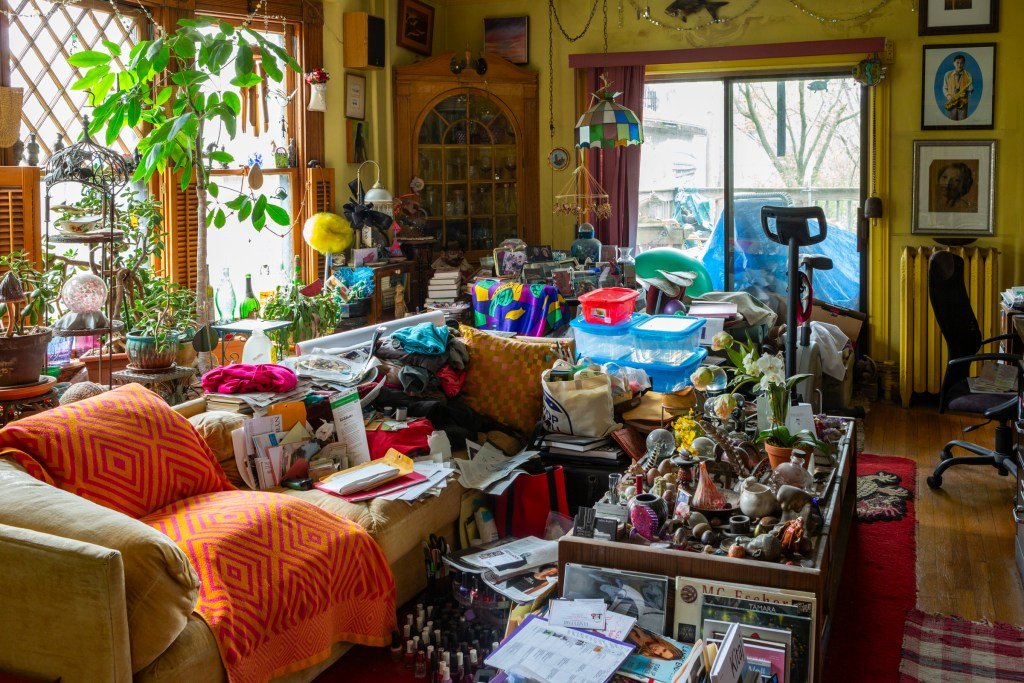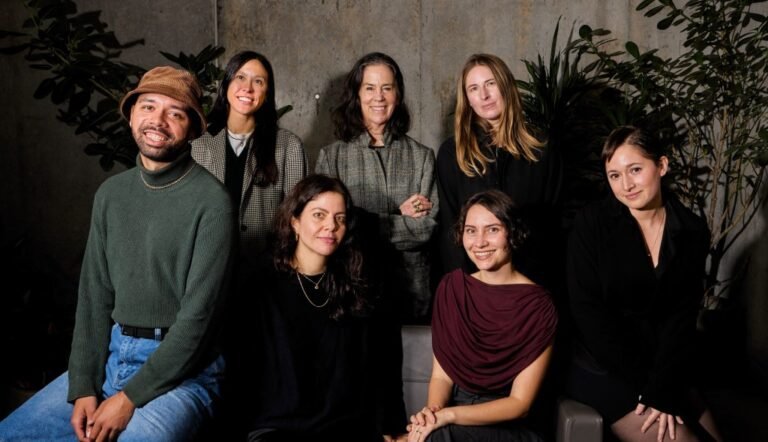

It seems like there’s nothing you cannot find in the studio of the late painter Barkley L. Hendricks. Feathers, shells, drums, and CDs pile up in heaps. Take your pick from dozens upon dozens of sunglasses or high heels. The monograph Piles of Inspiration Everywhere is a tour presented through photographs of Hendricks’s bursting studio, which spanned most of the top floor of the Victorian house that he shared with his wife, Susan Hendricks, for 35 years. During that time, she says in the book’s introduction, she was the only person permitted to cross the studio threshold; friends and curators alike were turned away from that section of their Connecticut home.
The artworks that Hendricks created in this studio have positioned him among figuration’s greatest painters. Subtly deviating tones articulate shadows and highlights in his subjects’ often monochromatic outfits, contrasted against rich brown skin. They sing in their simplicity and straightforwardness. He was an artist who could do a lot with a little; his minimalist compositions and color choices complement his intensive attention to detail.

Hendricks died on April 18, 2017. The labor to begin Piles of Inspiration Everywhere started just weeks later, while the studio was still as it was at the end of his life, his wife says. The book came together through a partnership between Susan Hendricks and David Katzenstein, photographer and managing editor of the Barkley L. Hendricks Photography Archive, who studied under Barkley Hendricks at Connecticut College.
Piles of Inspiration Everywhere is a unique look into the mind of one of the greatest representatives of American realist painting. “It’s like living in an art wonderland. … It’s just a cacophony of visuals,” Susan Hendricks said of the studio in an interview with Katzenstein featured in the monograph. The book seems also like a way to process grief. The experience of organizing a loved one’s belongings postmortem is a painful one. In this way, the book’s serialized, almost scientific cataloging of his treasured objects, like his cameras and notebooks, reads as haunting. Loss emanates from the images: a certain sadness, and an emptiness to a place that had once been alive with art-making. The book reflects these complicated facets of mourning — simultaneously sad and celebratory of his legacy, it is an invitation to the public to be immersed in Hendricks’s daily motivators and the influences he drew from, the objects and people that excited him.

Katzenstein’s photographs beautifully express that the studio’s seeming clutter is actually an amalgamation of decades’ worth of inspiration. The walls are brimming with reference materials: celebrity photo spreads, family pictures, magazine cutouts, exhibition posters. The studio almost comes across as an art project in and of itself. Hendricks clearly had an organizing principle amid seeming chaos, as evidenced by neatly structured sections, such as an area dedicated entirely to pictures of Vanessa Williams, or ironic and unexpected juxtapositions, like religious iconography next to nude photographs.
Similar to an iSpy search, you can see new things every time you look at these busy images. In one room, you might find plants with tangled branches and crispy leaves, and glass bottles shaped like fish or skulls. In another, you can scavenge for license plates, hats, and hand fans. Like a memory foam mattress that dips and curves with the contours of your body over time, morphed by the familiarity of your figure, the studio was perfectly molded to his likeness. In one photo, you can see a depression in the couch, lined by a chevron towel, wide enough for the artist alone to rest.

Hot-stamped into the book’s velvet blue cover is the phrase “I am part of a very fascinating drama which I record in the mediums of my desire.” The interior pages are punctuated by similar musings from his diaries, culled from legal pads spread throughout the office, dating back to the 1970s. These journal entries are poetic prose, like riddles ready to be interpreted. They include his vulnerable moments of self-doubt, as well as insights into his hours in the studio, making note of his daily soundtracks: Horace Silver, Art Blakey, Fela Kuti. He likewise offered wisdom into the aesthetics of his paintings: “I feel I’m into everything. More arms than I have, all reaching. Energy! Energy! Energy!”
The book’s title, Piles of Inspiration Everywhere, is drawn from Barkley’s own imagination, says Susan. It was a phrase he recited often, enlivened by living among his favorite stimuli. Artists and writers seeking their own source of inspiration might find it in these pages.





Barkley L. Hendricks: Piles of Inspiration Everywhere (2025) by Susan Hendricks and David Katzenstein is published by Hirmer Verlag and is available online and through independent booksellers.


